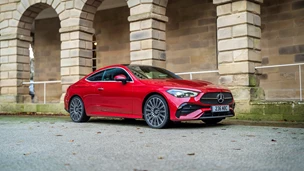Experience of discussing the Infiniti Q50 with real people, as opposed to motoring journalists, suggests that what they really want to know about is the steering.This is not true of many cars, but in this case there's a good reason for it. When the engine is switched off, the Q50's steering wheel has a direct mechanical link - of course it does, why wouldn't it? - to the road wheels. Switch on the engine, though, and this link is broken, not to be restored until your park the car and walk away from it.When you're actually driving the car, it changes direction in response to your inputs via an electronic control unit. If that fails, another one takes over. If that fails, a third chimes in. Only if all three go south is the steering column re-engaged.Why? Well, this is partly in preparation for the day when Infiniti launches an autonomous car, which it intends to do one day. A more immediate reason is that it permits the use of Active Lane Control. Assuming you've switched it on and the car can see clear white lines on either side of the lane you're travelling in, it will steer itself such that it stays in that lane unless you ask it not to. It really does. I've tried this. Very effective.On the whole, Infiniti has done a good job of making the Q50 feel as if the road and steering wheels are directly connected even though they're not. There is a decent amount of "feel", artifical though it may be.Not all is well, though. On country roads I sometimes felt that the Q50 was an inch or two either side of where I thought I'd put it, and I would wonder if something had perhaps gone wrong with the tracking or tyre pressures until I remembered how the steering operates. Bit more work to do here, I think.The most recent update to the Q50 range has been the introduction of a 208bhp two-litre turbo petrol engine supplied by Mercedes-Benz, and available only with seven-speed automatic transmission, alongside the existing diesel and petrol-electric hybrid powertrains. This is a slightly odd move. The 2.0T (that's the non-hybrid petrol model) is cheaper than either of the others, but it undercuts the diesel by only £145, and the roughly 20mpg difference in combined fuel economy suggests that it won't take long for that amount to be claimed back at the pumps.Infiniti also claims improved refinement, but this is difficult to take seriously. The engine noise is not well suppressed (there's a system called Active Noise Control, but it doesn't seem to do much) and you can hear what's going on far more easily than should be expected in a semi-luxury car in the modern era. Frankly, I've driven quieter superminis.Nor is refinement helped by the 19" wheels and 40-section tyres which are part of the Sport specification. The ride quality isn't as good as might otherwise be the case, and the car feels fussy at times when you might hope that something with an Infiniti badge would feel serene.This is not a particularly relaxing car to drive, then, but it can be fun. Although it rarely gives the impression that it will ever live up to the Sport part of its name, enthusiastic progress through several sequences of corners (conducted entirely for scientific reasons, I need hardly add) showed that it's willing to be playful if you're in that sort of mood.Despite the refinement reservations mentioned above, Infiniti has done a very good job with the interior, and in particular with the touchscreen, whose design is pleasingly modern without being in any way wacky. It took me some time to become familiar with it, and after a week I still didn't find it easy, but against that it has to be admitted that I'm a rather stupid person.The interior design and the level of standard equipment make the basic on-the-road price of £34,125 seem reasonable. The test car cost more than £41,000, though, thanks in small measure to the metallic paint (£660) and electric glass sunroof (£889).There were also three option packs which deserve some attention. Visibility costs £1040 and is worth it mostly for the Around View Monitor, though adaptive front lighting with automatic headlights is also appealing. Safety Shield (£2080) includes relatively simple things such as Blind Spot Warning and more complicated ones like Forward Emergency Braking and Intelligent Cruise Control, and I was most impressed to be able to follow a van along a very twisty road without touching the brake pedal for several miles - speed reduction was taken care of automatically.My favourite pack, though, is Multimedia (£2760), whose best feature is a fantastic 14-speaker Bose audio system. You also get satellite navigation and DAB digital radio, and of course they're nice to have, though it's disappointing that they're optional on the Q50 when so many much humbler cars these days have them as standard. Engine 1991cc, 4 cylinders Power 208bhp Transmission 7-speed automatic Fuel/CO2 43.5mpg / 295g/km Acceleration 0-62mph: 7.2 seconds Top speed 152mph Price £34,125 Details correct at publication date

Our Rating



